Sumitomo Heavy Industries' proton therapy system
The proton therapy system consists of a cyclotron, beam delivery devices, and rotary gantry irradiation devices (gantry, irradiation nozzle, patient positioning system).
Sumitomo Heavy Industries has been an accelerator manufacturer since the early 1970s, and for proton therapy, we have been collaborating with domestic universities in Japan since 1989. In 1997, the first proton beam therapy system of the National Cancer Center Japan was delivered to the East Hospital Research Center. Since then, the system has obtained Japan's first medical device manufacturing and sales license (*1) as a proton therapy system in 2001, and has been operating stably for a long time. In addition, in November 2013, we obtained approval from the US FDA (510k).
(*1) Medical device production and sales approval number: 21300BZZ00130000
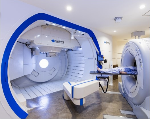
1. Arrangement format (flat arrangement type/vertical arrangement type)
There are two types of cyclotron and gantry arrangements: flat arrangement and vertical arrangement (*2).
In the case of the vertical arrangement type, the required building space is significantly reduced compared to the flat arrangement type, and it can be arranged even in places with large site restrictions.
(* 2) Patent (No. 5373220/5437527).
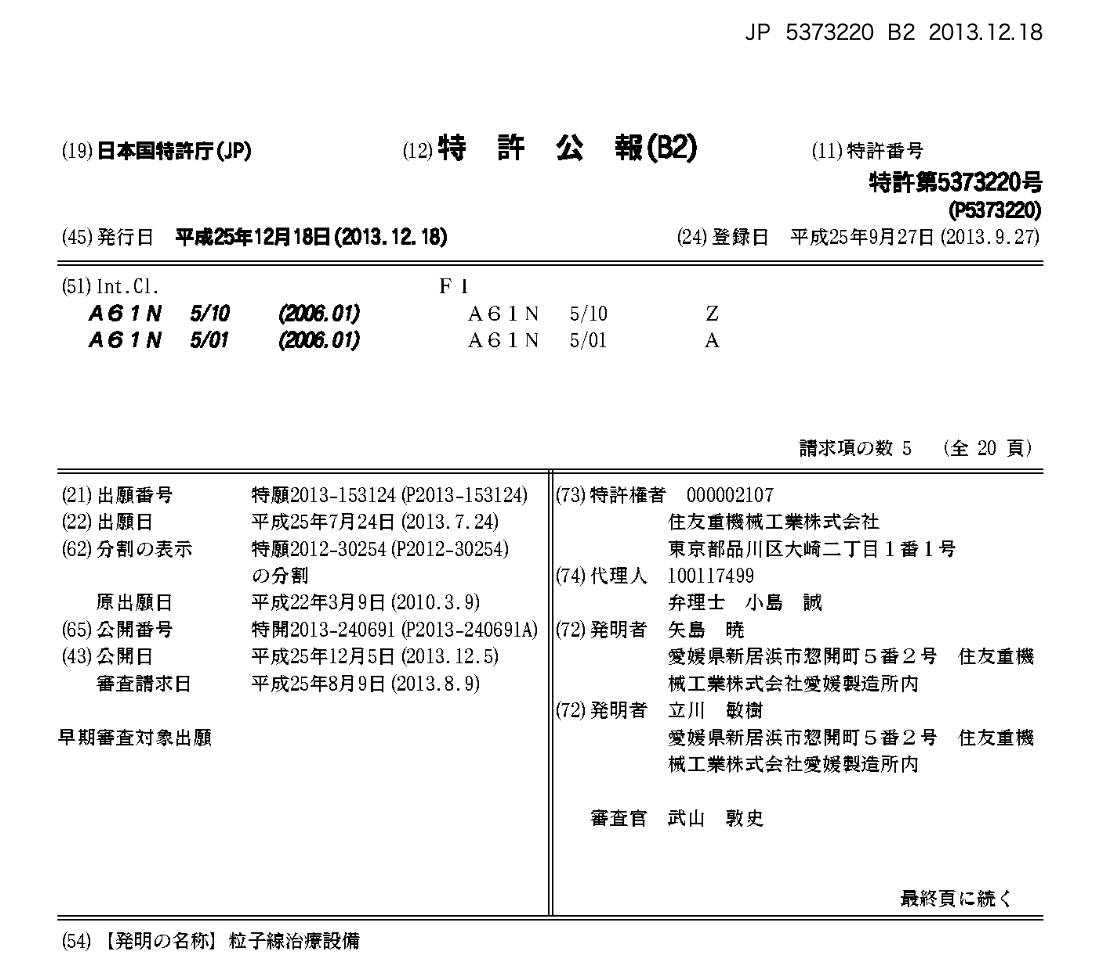
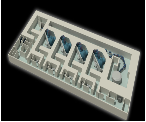
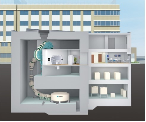
2. Cyclotron
A circular accelerator that accelerates protons, which are hydrogen nuclei, to 70% of the speed of light, resulting in a proton beam with high permeability. This cyclotron has been specially developed for proton therapy, where protons are accelerated to an energy of 230 MeV (range of 32 cm).
Because it has the function of generating large doses and continuous beams more stably than other types of accelerators, it is very suitable for irradiating respiratory organs (lungs, liver, etc.), and the treatment time (the number of times) can be shortened.
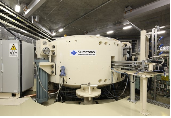
3. Rotating gantry irradiation device
Using a rotating rack, irradiating the target cancer cells with a proton beam from any angle of 360 degrees without forcing the patient into a difficult position. It has an irradiation nozzle and a patient positioning system (X-ray DR device, treatment bed, etc.) as well as a rotating rack (structure). As a result, beams of protons that have been passed through a rotating rack are irradiated from the irradiation nozzle into the shape of the target cancer cell.
Due to the reduced size (small short-axis gantry), the installation space is greatly reduced
The newly developed small short-shaft gantry significantly reduces the installation space required. A conventional rotating rack (hereinafter referred to as a conventional rack) is a huge structure with a beam trajectory on the same plane, a rotation diameter of about 10 m, and a length of about 10 m in the direction of the axis of rotation. Therefore, the large installation space is required. Conversely, compared to traditional racks, small short-shaft racks reduce the length of the direction of the rotation axis to 50% or less by arranging beam trajectories on three-dimensional elements. As a result, in the flat arrangement type, the required area of the building can be greatly reduced. When the land restriction is large, the vertical arrangement method can be used to further reduce the land. Flexible layout planning according to the location requested by the customer.

4. High-precision irradiation system (expanding beam irradiation method / scanning irradiation method)
There are two types: multi-function irradiation nozzles (*3) or scanning irradiation nozzles. The multifunctional irradiation nozzle can irradiate the extended beam method (Wobbler method) (*4) and the scanning method (*5) can be switched in a short time without replacing the hardware. This allows the appropriate irradiation method to be selected based on the target disease.

5. High-precision patient positioning system
High-precision patient localization can be achieved by combining a 6-axis automatically controlled Robot bed with high degrees of freedom and high position accuracy with an X-ray DR device (detector: FPD) capable of simultaneously imaging in two orthogonal directions. The X-ray DR device can also acquire cone beam CT images by rotating the rack. On the other hand, a self-propelled CT (indoor CT) can be placed in the treatment room, and a 6-axis automatically controlled Robot bed can be shared for diagnosis and treatment.
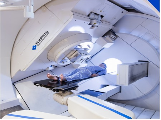
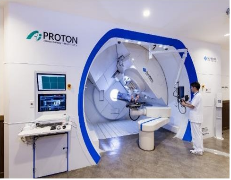
In addition, we also obtained the medical device business license (No. 20200006) issued by the Shanghai Minhang District Market Supervision and Administration Bureau in April 2020. We will serve you with the most professional technology and attitude.

Contact: Ms. Liu
Contact Email: bing_liu@tomi-em.com
Contact number: 010-67806601


 中文
中文 日本語
日本語 한글
한글 English
English